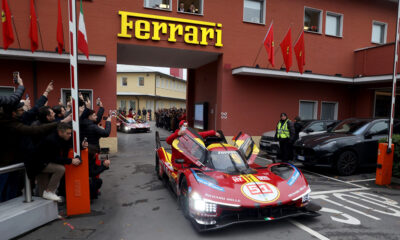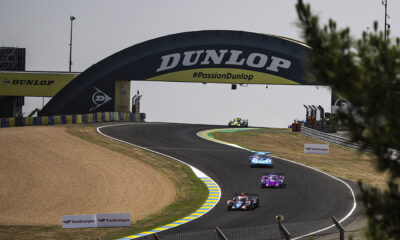
Photo: Vision Automobiles Paris
A French automobile start-up has declared its intentions to enter the 24 Hours of Le Mans in three years’ time with a hypercar that runs on bio-methane fuel.
The race car concept dubbed ‘1789’ has been conceived by Vision Automobiles Paris but includes input from a network of partners around France including the research and technology arm of former Le Mans participant Welter Racing.
Thomas Castex, who co-founded the project with Florian Gravouil and Martin Chatelier, explained that the aim is to showcase both the biofuel technology and the capabilities of French engineering.
The company aims to be on the grid at Le Mans in 2023 under the Garage 56 program, which enables innovative cars outside the normal technical regulations to enter.
Liquid bio-methane fuel will be used in the competition version of the 1789, while there are also plans to produce a road-legal car that will run on a gaseous bio-methane mix.
Bio-methane is an efficient renewable energy source that is derived from decomposed organic waste.
“We started this project four years ago,” Castex told Sportscar365.
“The first objective of this project is to produce an exceptional car, like the Aston Martin Valkyrie or a Pagani, but we want it to be born at the 24 Hours of Le Mans.
“It’s not just to produce a road-legal car, because everybody wants to make sports cars, but for me it’s essential to first produce something that’s efficient on the track.”
The car is likely to be powered by a twin-turbo V6 or V8 engine coupled with an electric motor to create a total output of 1,000 horsepower.
Welter is responsible for integrating the biomethane fuel system, while Faster Racing is building the prototype chassis and Michelin has also come on board as a partner.
“The design is about 70 percent fixed,” explained Castex.
“We have done studies with some companies and partners for aerodynamics, bodywork, chassis and other parts.
“I think we can be ready for the 24 Hours of Le Mans in 2023, for the centenary of the race.
“We want to use the bio-methane technology in the race and one of the most important current goals is to speak with the Le Mans organization to use the Garage 56 [entry program].
“We will build the cars near Paris, maybe 30 km outside the city. But after, we will use the knowledge and know-how of many companies to produce the cars.”
VAP is aiming to raise €6 million ($6.5 million USD) through investors and donations to realize its Le Mans goal, while a higher target of €10-12 million ($10.8-13 million) has been set for this primary objective plus a worldwide presentation tour and the start of the road car’s development program.
Once the necessary funding has been achieved, it intends to put the car into its development and test phase. It also hopes to present the concept at Le Mans next year.
Reigning European Le Mans Series LMP2 champion Paul-Loup Chatin and prototype racing regular Matthieu Vaxiviere have been named as the two chief development drivers.






















